Features and technology for pruning cherries in spring
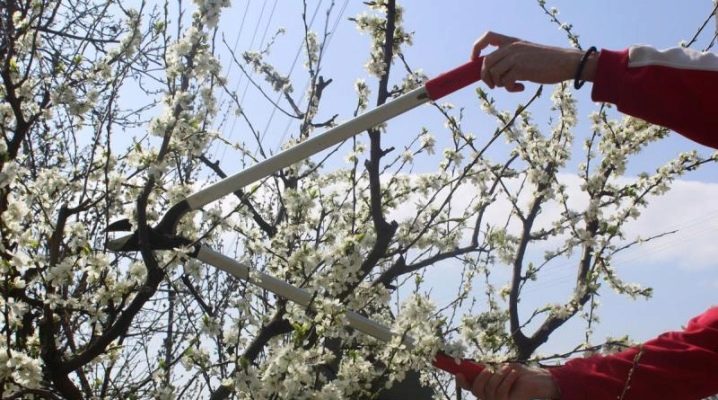
One of the most important agricultural activities carried out by cherry owners in the spring is pruning. It allows you to solve a lot of urgent tasks, the main of which is the formation of the crown and the achievement of a consistently high yield. Anyone can achieve what they want: it is enough to know the key features of this procedure and the technology for its implementation.
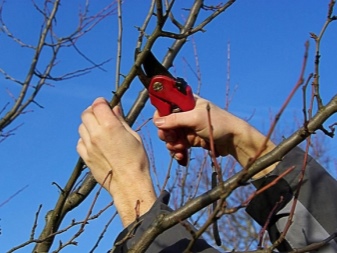
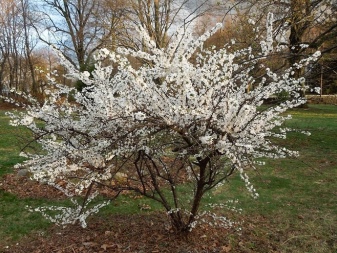
The need for a procedure
Practice shows that pruning is necessary for cherries at all stages of their life. In the first years from the moment of planting, it determines the correct development of the tree, and in subsequent years it significantly increases the productivity of the culture. The latter point is especially relevant for cherries that are over 12 years old: upon reaching this mark, they begin to age, their yield decreases, and without pruning, trees may die prematurely.
There are other goals that this procedure can achieve.
- Crown formation. The best option is maximum symmetry. An equally important component is thinning, which regulates the density of the location of the shoots.
- Removing old and / or weakened branches. This event is purely sanitary. Thanks to him, the cherry gets rid of the non-fruiting "ballast" that takes away its vitality. An equally important role is played by the identification and removal of branches damaged by cold, pests and / or pathogenic microflora.
- Improving the characteristics of the crop. In addition to increasing the number of fruits harvested, correct pruning guarantees a noticeable increase in their quality. As they get more nutrients, they become larger, tastier and more flavorful.
In addition, the described procedure brings the moment of awakening the tree closer after winter and promotes increased flowering.

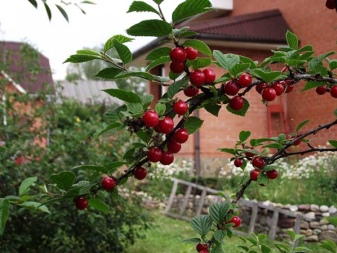
Timing
There is no specific date for the spring pruning of cherries. The main thing for a gardener is to perform the procedure before the active movement of juices begins, before the appearance of swollen buds. Depending on the region, it can be carried out in the following terms:
- Ural and Siberia - mid-April;
- the middle strip (including the Moscow region) - from late March to early April;
- southern regions - mid-March.
Taking into account the coordinates of the terrain and weather conditions, the pruning time can vary both in one and the other direction. Special attention should be paid to the situation requiring the execution of the procedure after the start of sap flow. Most often, its need arises due to the harsh winter, which led to the death of a large number of shoots. In order not to cut off healthy branches, you need to accurately distinguish them from the affected ones, waiting for the buds to bloom.

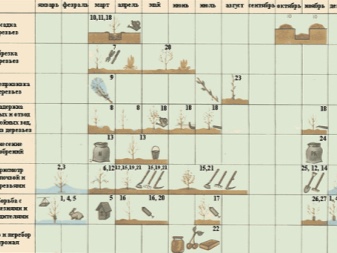
What tools are needed?
In order to carry out pruning of cherries with the least expenditure of time and effort, the gardener needs the appropriate equipment.
List of basic tools.
- Pruner. Designed for removing branches up to 25 mm in diameter.
- Lopper. It is used in cases requiring pruning of branches in the depth of the crown, the diameter of which does not exceed 30 mm.
- Garden saw. It is used in situations where the pruner or lopper cannot cope with the task at hand. With the help of a saw, the gardener can remove any branches - there is no thickness limitation for it.
- Knife. Auxiliary tool most often used for neat trimming of sections.
Before using the inventory, you should pay attention to its disinfection. It can be carried out in different ways, but most often gardeners resort to three main methods:
- rubbing with alcohol;
- treatment with a weak solution of copper sulfate;
- calcination at a temperature of about 180 ° C.
In addition to those listed above, the cherry owner may need additional accessories to simplify the pruning procedure:
- a stepladder is especially useful when working with tall trees;
- protective goggles that effectively prevent chips from getting into the eyes;
- garden gloves, dense material of which protects hands from mechanical damage.
Also, the owner of the tree may need spacers and ropes. The first ones allow you to easily change the angle of inclination of the branches, and the second ones - to perform their reliable fastening.
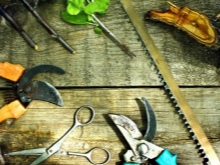
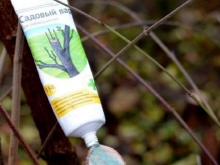
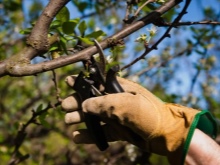
How to prune a tree correctly?
Depending on the age of the cherry, the procedure under consideration has its own characteristic features. An important role is played by the type of plant - tree or bush, which determines the technique of its pruning.
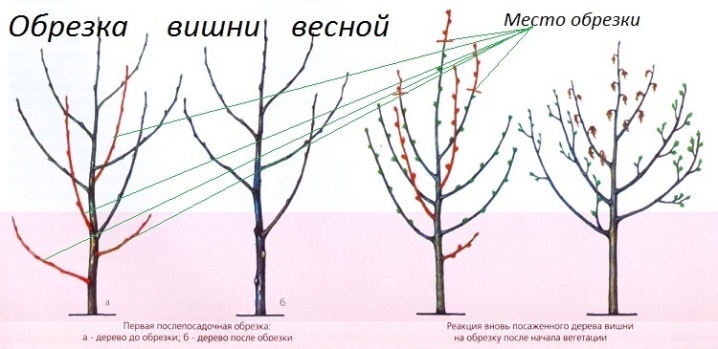
Young
The first pruning of cherries is carried out immediately after planting. Performing this procedure allows you to solve 2 problems at once - to form the correct appearance of a young tree and accelerate the development of its root system. The procedure for pruning a seedling is quite simple.
- Choosing the main escape. In the future, it will perform the function of the trunk, and therefore its location should be vertical.
- Determination of future skeletal branches. It is enough to choose 5-6 shoots growing in different directions at a distance of 10-12 cm from each other.
- Removing everything that interferes with the further development of the tree. This category includes shoots that intersect or grow into the crown. And also the root growth is subject to elimination, if any.
- Slicing processing. To minimize the risk of infection, you can use a garden pitch, applying it in a thin layer (no more than 4 mm).
Further pruning of young cherries is carried out annually for 4-5 years. The natural result of the work should be a healthy tree, the crown of which is symmetrical and moderately thinned.
In the 2nd year of life, pruning of a plant is carried out according to the following scheme:
- elimination of shoots affected by cold, diseases and pests (if any);
- removal of branches growing incorrectly (primarily directed towards the center);
- reduction in the length of lateral shoots (pruning is performed at a level of 30 cm from the top of a young tree);
- elimination of branches that are too close to each other (this way you can thin out the crown).

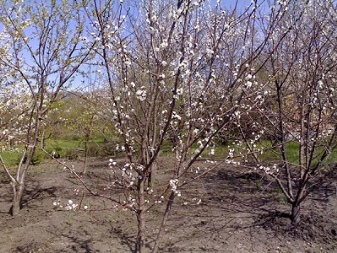
If the formation of a cherry is carried out correctly, at the age of 3 years its appearance corresponds more and more to the sparse-tiered type. This requires:
- identify branches that are longer than 60 cm and shorten them by about 15%;
- determine the best 2-3 shoots from last year's (they are needed to form 2 tiers);
- remove all other branches that have grown over the past year.
At the 4th year of the tree's life, pruning is also performed step by step in accordance with a simple algorithm:
- remove branches pointing inward and / or close to each other;
- trim the rest of the shoots so that the crown of the cherry has the shape of a "herringbone";
- the upper branches should be pruned so that they are 10-15 cm below the top of the tree;
- choose 2-3 of the strongest last year's shoots to create 3 tiers;
- get rid of the rest of the young branches that have grown over the year.
For the 5th year of life, the cherry should have about 15 frame branches. Another important condition is the location of semi-skeletal branches on either side of the skeletal ones.
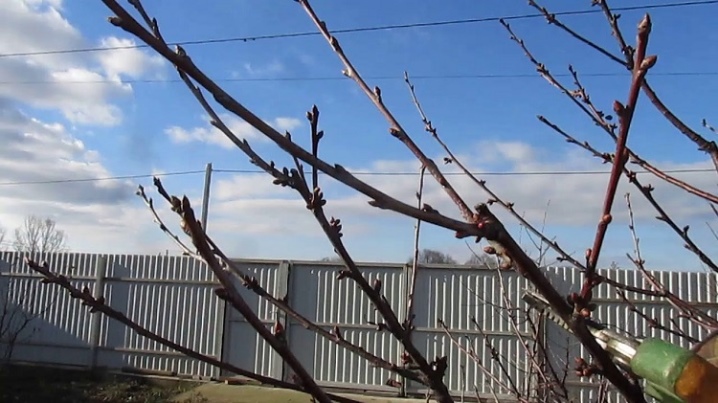
Fruiting
Pruning an adult tree has its own characteristics, taking into account which allows you to achieve consistently high yields. In addition to removing sick and dead shoots, if any, it provides for a number of operations.
- Getting rid of branches leading to thickening of the crown. An exception should be made only for branches parallel to the ground.
- Elimination of all shoots that impede the development of frame branches.
- Shortening the trunk.It is performed in a situation where it protrudes 20 cm or more above the skeletal branches.
- Removal of overgrowth, if any. Leaving it, the gardener runs the risk of facing a decrease in the yield of the cultivated crop.
- Pruning wireframe branches. It is performed in a place where new lateral shoots have stopped growing.
As for the annual branches, it is not recommended to shorten them - they can dry out from such a procedure.

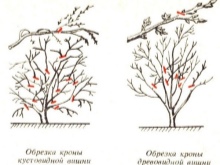
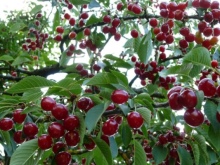
Old
As a rule, the rejuvenation procedure is necessary for cherries that have reached the age of 12, although sometimes it may be needed 1-2 years earlier. Carrying out this event has a positive effect on the yield and prolongs the life of the tree, even in the most neglected cases. The essence of the procedure is the removal of old branches that are not capable of bearing fruit, and a shift in emphasis towards new shoots.
One of the most popular methods of cherry rejuvenation is to trim the top, which involves a specific procedure.
- Removing the crown at a height of 2.5-3.0 m. As a result of this operation, the development of the buds located below - the future lateral branches - begins.
- Inspection of new shoots. As soon as they grow out of the buds mentioned earlier, the gardener selects 2-3 of the strongest specimens from them (the rest are removed).
- Elimination of old ("empty") branches. It is carried out gradually, in parallel with the development of young shoots.
Experts recommend getting rid of 1-2 "empty" branches per year, not exceeding the specified value. Ignoring this rule is a serious stress for an old tree, whose vitality is relatively small.

The second way to rejuvenate cherries involves shortening the frame branches. It is carried out up to the side branches, looking up, according to the most suitable scheme:
- light - in a place where the branch is 2-3 years old;
- deep - in the immediate vicinity of the trunk (in the area corresponding to the age of 4 to 5 years).
Another rejuvenation technique is the use of special, vertically growing shoots to form a new frame. Gardeners call them "spinning tops", and they are formed in places where old branches of great thickness are cut to form a hemp. As with other young shoots, you need to leave a few of the strongest specimens, bending them at the desired angle. An alternative solution is to shorten the tops, allowing them to grow sideways.
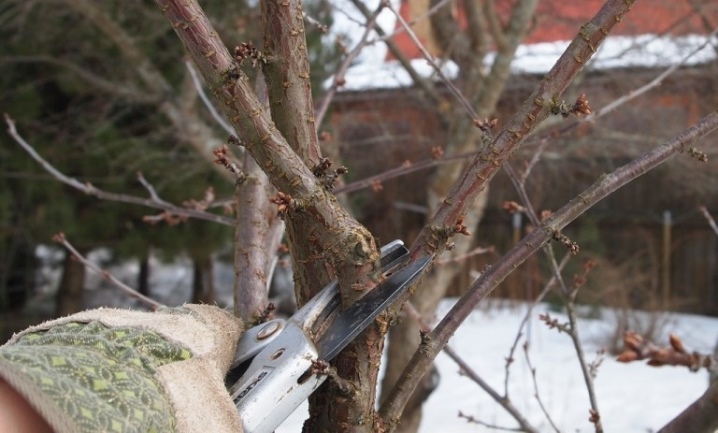
Nuances of pruning bush cherries
Special attention should be paid to pruning cherries growing in the form of a bush. Unlike their tree-like relatives, they form fruits exclusively on annual branches (primarily at their ends). This feature of bush cherry does not allow getting rid of young shoots - the basis of its yield. Another distinguishing feature of the described plant is a high tendency to thickening, which negatively affects the size of the fruits and their number. There is only one effective measure to combat this - regular and powerful thinning.
The rest of the rules for pruning bush cherries.
- The skeleton of the plant should be as strong as possible. When forming a crown, the gardener should leave no more than 7-8 frame branches. And also it is necessary to get rid of all shoots that can compete with the main trunk.
- The bush should not fall apart over time. To solve this problem, you need to observe the correct angle between the lower branches and the trunk - no more than 40 °.
- Downward shoots must be removed. The same applies to branches affected by diseases, pests or severe frosts.
- The branches of a two-year-old bush, the length of which exceeds 50 cm, are cut off by about 15-20 cm.
- Skeletal and semi-skeletal branches are shortened to the level of dormant buds (alternatively, to well-developed lateral shoots).
Talking about the principles of pruning bush cherries, it is worth mentioning its felt variety, also called Chinese.It got its name for its specific pubescence, and the main features of this culture are its decorative value and high yield. The latter is achievable provided that several key conditions are met:
- obligatory annual pruning (otherwise the bush thickens, which negatively affects fruiting);
- the average number of frame branches is from 10 to 12;
- annual shoots that have reached a length of 60 cm are shortened by about 20 cm.
And also do not forget about the timely removal of dry and damaged branches that negatively affect the health and decorative characteristics of felt cherry.
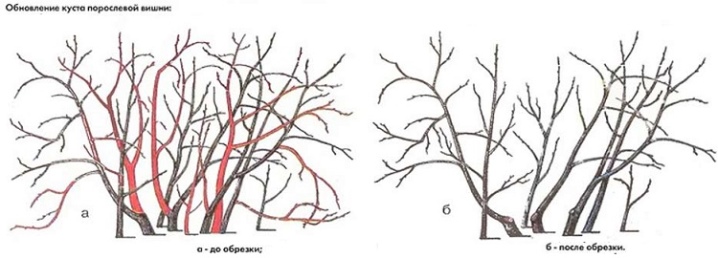
Possible mistakes
In conclusion, it remains to list the most common mistakes gardeners make when pruning cherries.
- Conducting agrotechnical measures with a clear delay. As mentioned above, the main work should be completed before the start of active sap flow.
- Violation of the regularity of the procedure. Practice shows that you need to prune cherries every spring, and not every few years. Depending on the state of the tree, the nuances of the event may differ, but it must be carried out without fail (except for the cases that will be mentioned below).
- Pruning a tree with severe trunk damage and / or cracked bark. In most of these situations, it is worth betting on the growth, from which it is possible to grow a root shoot (the main thing is that it should be).
- Delayed removal of branches affected by pathogenic microflora or pests. Such shoots should be cut and burned without delay to avoid the spread of parasites or infection to healthy areas of the plant.
- Carrying out pruning of cherries in the cold. Freezing temperatures make the branches more fragile, which increases the risk of accidental damage. The warm days of the spring months are suitable for pruning, minimizing the likelihood of severe gum leakage.
- Attempts to remove thick branches with a pruner. In such cases, experienced gardeners advise using a sharp saw - a tool that can cope with branches of any diameter.
- Cutting off old shoots with a ring-shaped bead at their base. Such an action can lead to cracks, decay and other troubles, and therefore is considered erroneous. These cuts should be made along the top edge of the bead without affecting it.
Following the listed recommendations, any gardener will be able to prune cherries without mistakes - both very experienced and not possessing an impressive set of skills. Patience, attentiveness and timing are all it takes.

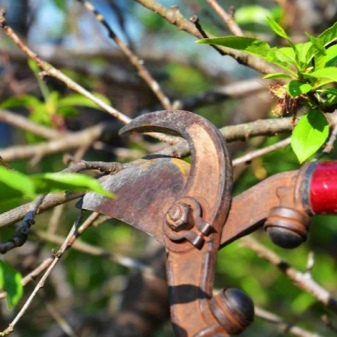







The comment was sent successfully.